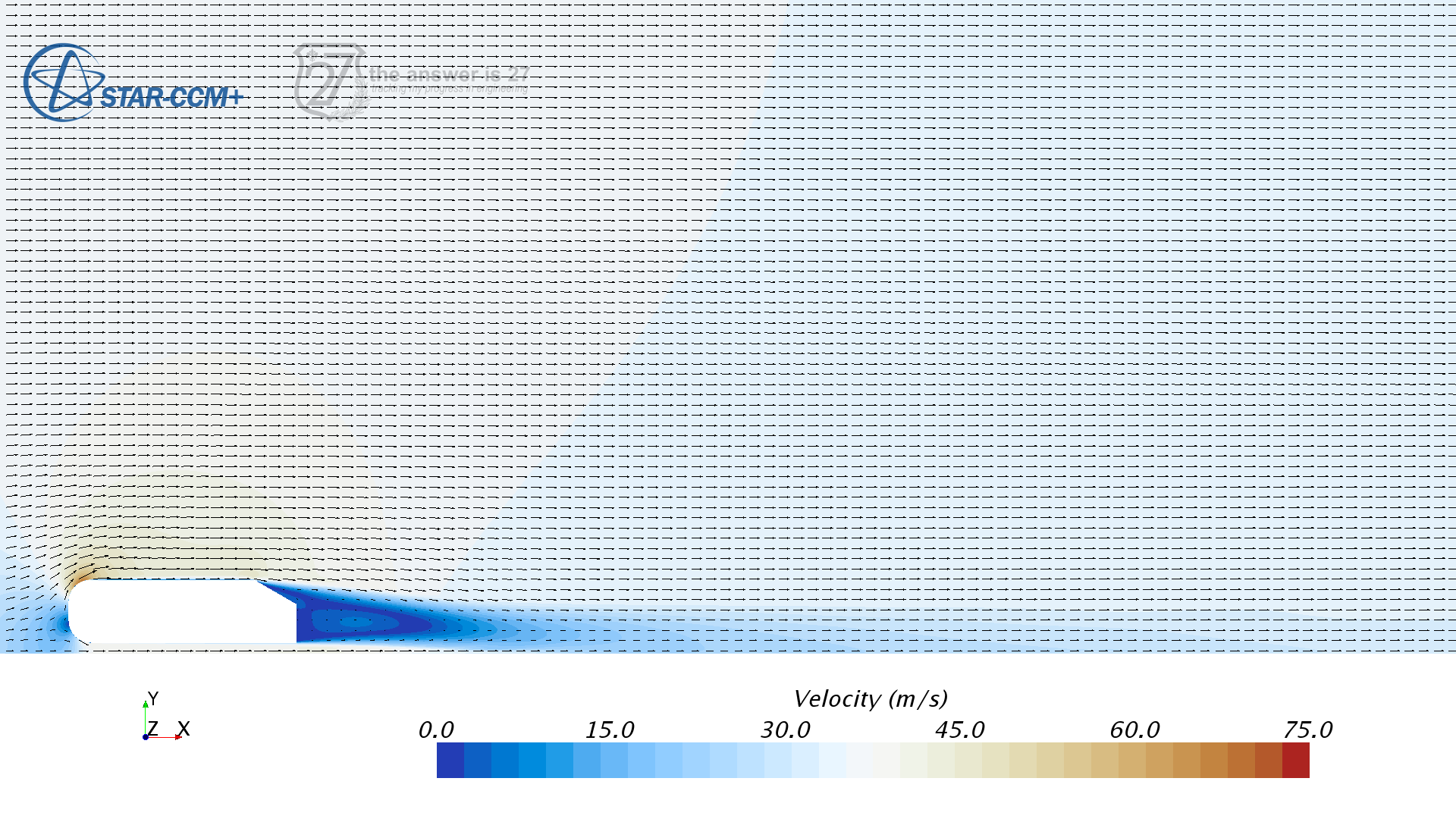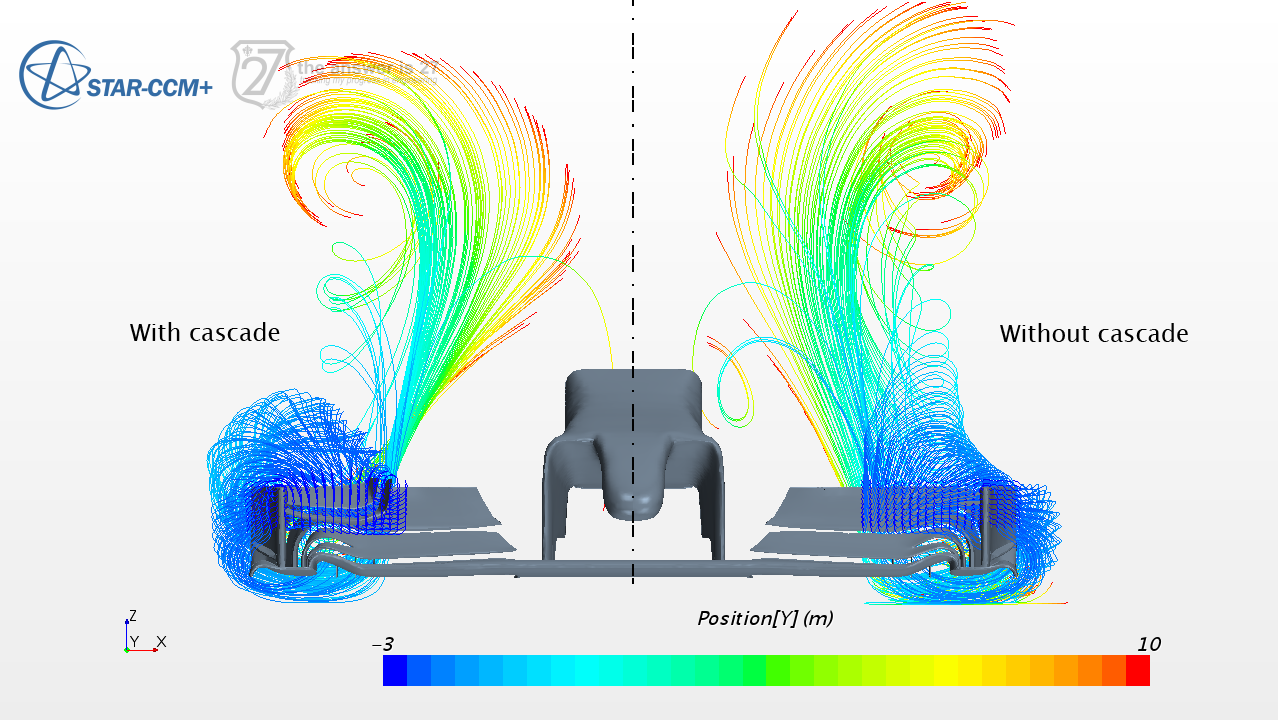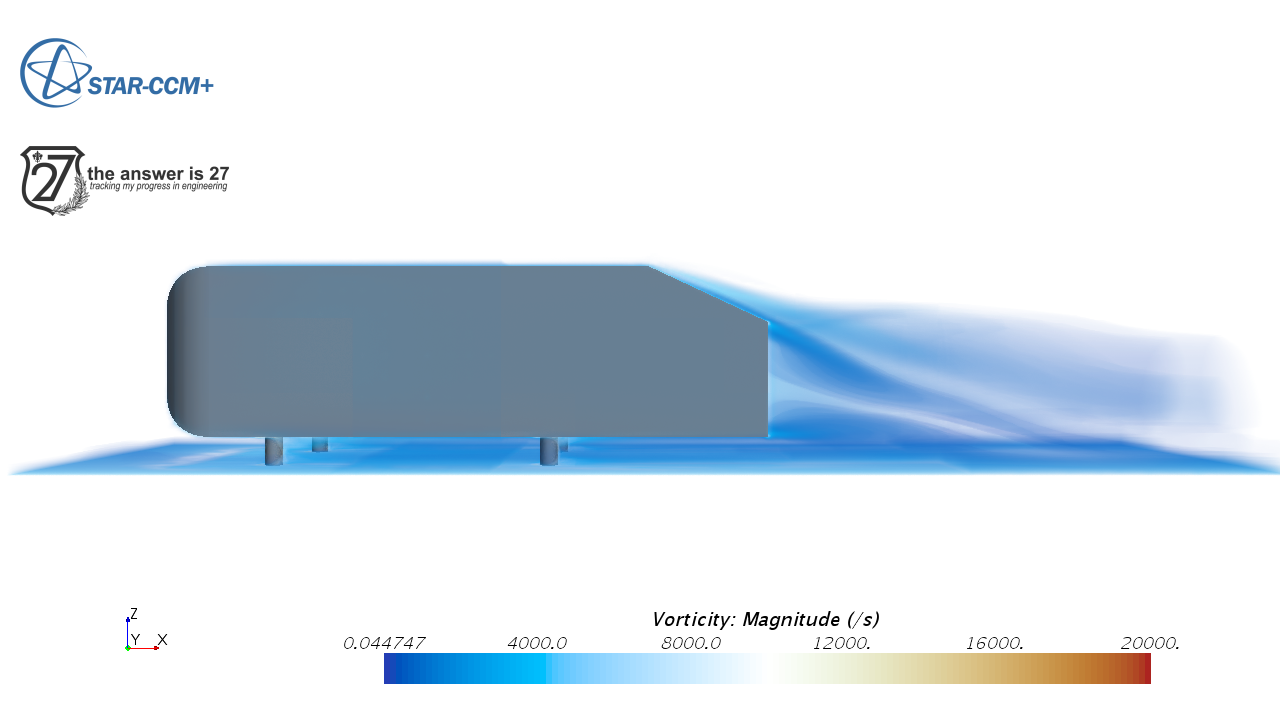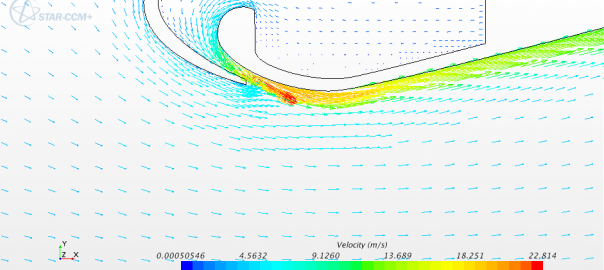
Drag coefficients for two Ahmed models at different vehicle spacing
This is an interesting academic exercise proposed in the book by Tu et al. [1] to analyse the aerodynamic drag and lift of two drafting […]
Continue reading »
This is an interesting academic exercise proposed in the book by Tu et al. [1] to analyse the aerodynamic drag and lift of two drafting […]
Continue reading »
This is by no means representative of the actual performance of McLaren’s aerodynamic packages. The CAD geometry was generated based on high quality pictures, but from […]
Continue reading »In this post I am trying to investigate the influence of velocity in aerodynamic drag and downforce. A case like this is quite easily set up in […]
Continue reading »An important aspect to take into account when pushing for a good Computational Fluid Dynamics simulation is the process of verification and validation. Validation is usually carried […]
Continue reading »
The Ahmed vehicle model was introduced in 1984 by Ahmed et al. [1] to investigate the flow structure on the drag in the automotive industry. […]
Continue reading »We can find turbulence every day in almost every daily situation, whether it be smoke from a cigarette, water in a river or waterfall, the […]
Continue reading »When the Knudsen number $$ Kn = \frac{M}{Re}\sqrt{\frac{\gamma \pi}{2}} $$ is small, Kn < 0.01, the continuum mechanics formulation of fluid dynamics is valid, and so are […]
Continue reading »We’ve already discussed space, time and motion models, which represent just a small portion of the physic models available in STAR-CCM+. This is Part II. […]
Continue reading »
As I mentioned in a previous post, I was curious about how Dyson’s Air Multiplier worked. There is a quite interesting video in YouTube where […]
Continue reading »Now that we’ve seen the meshing models available in STAR-CCM+, it is about time to have a look at the physic models solvers used to provide […]
Continue reading »